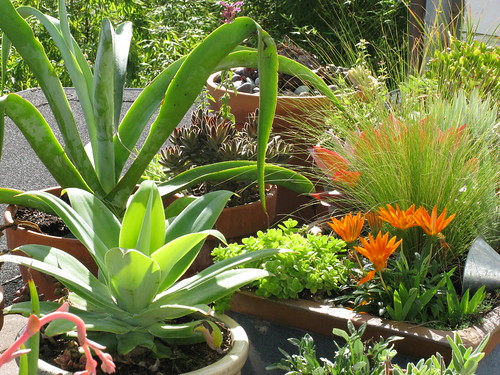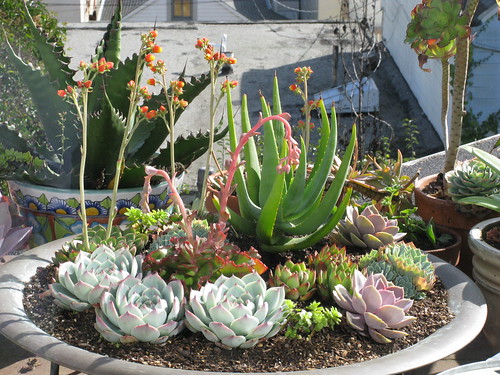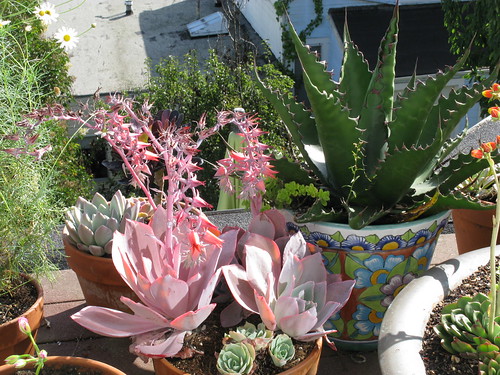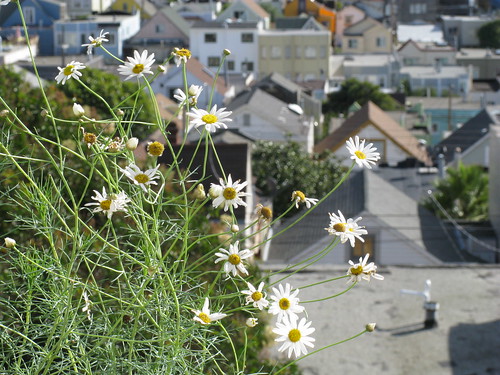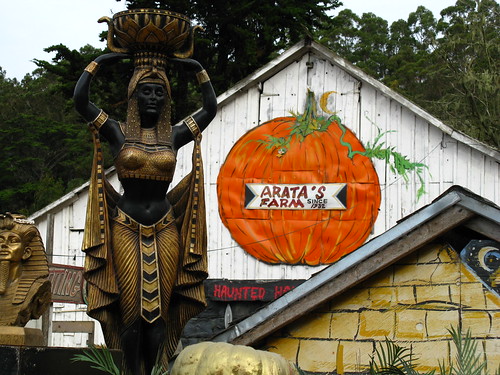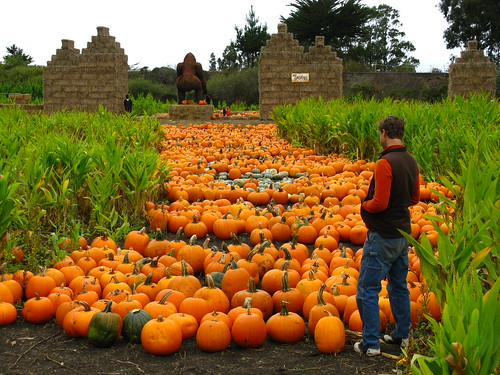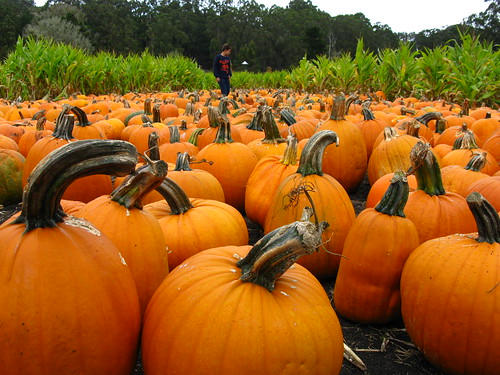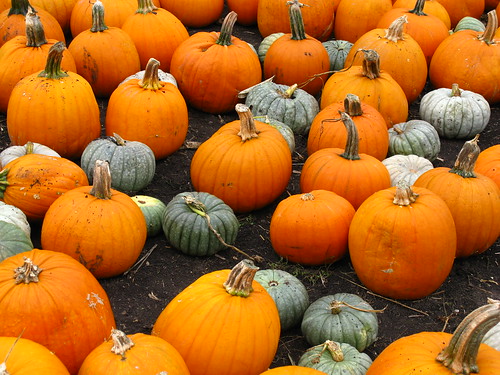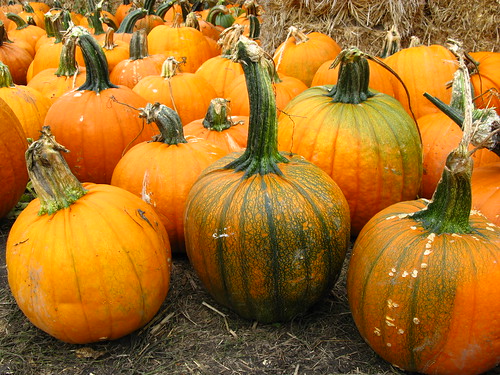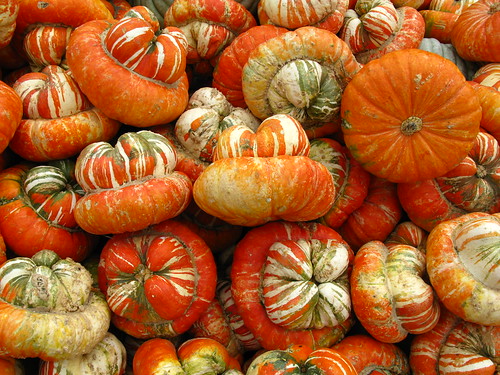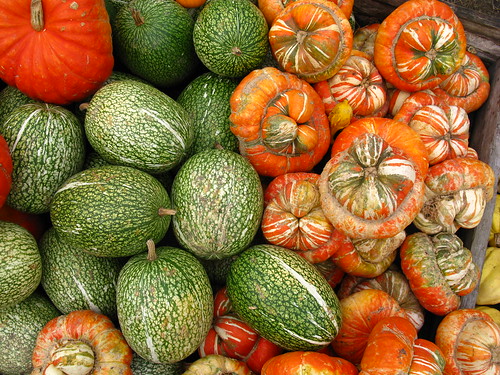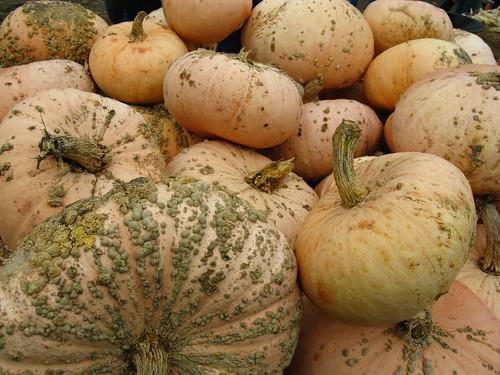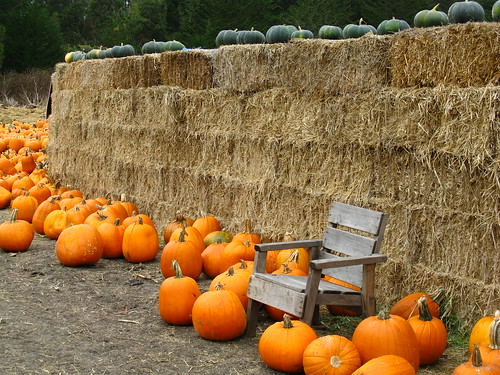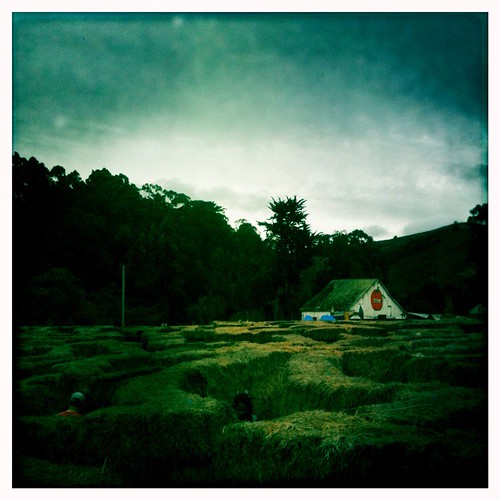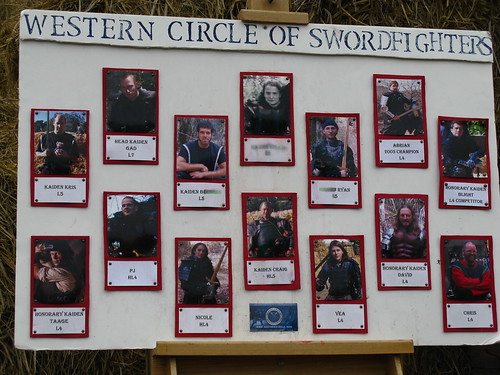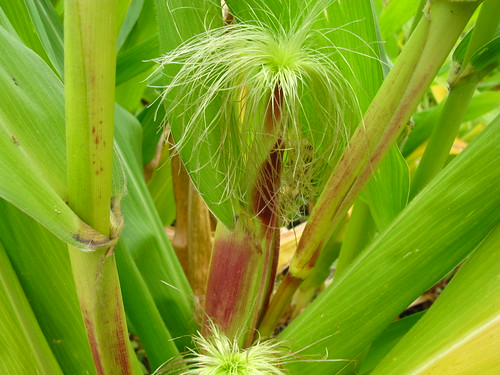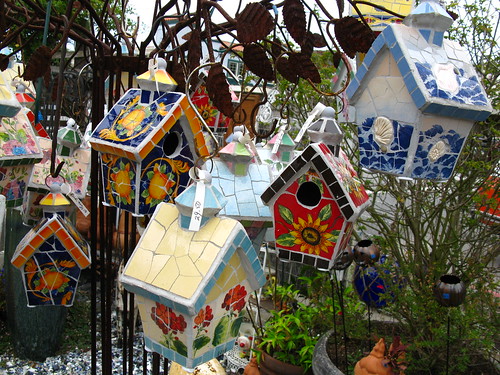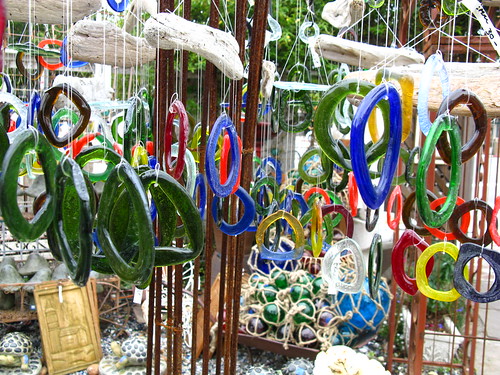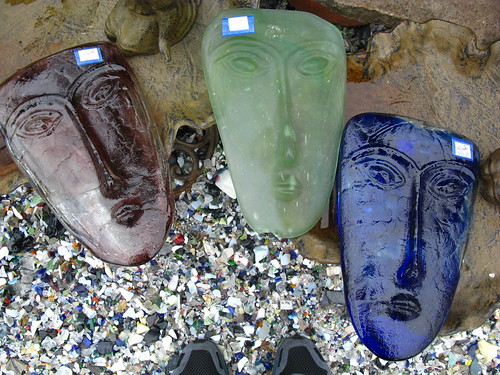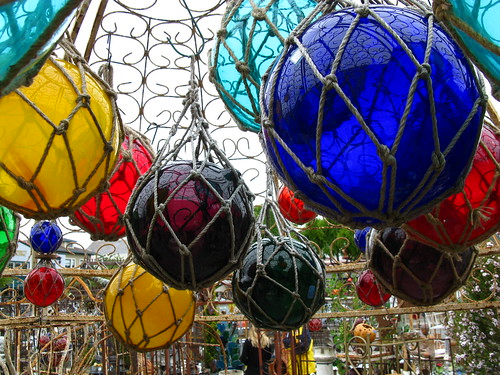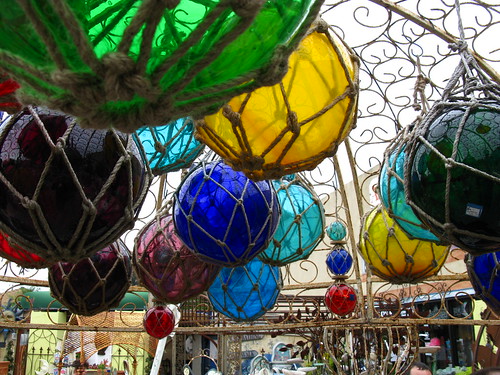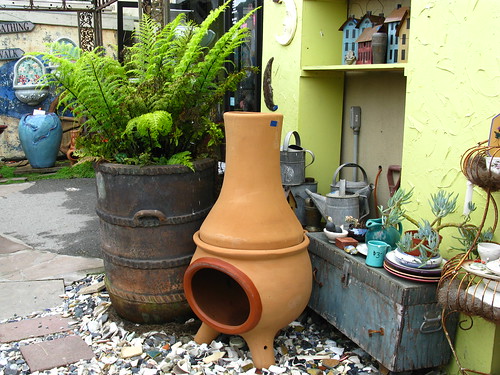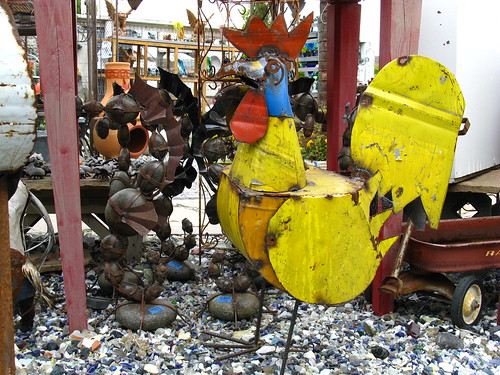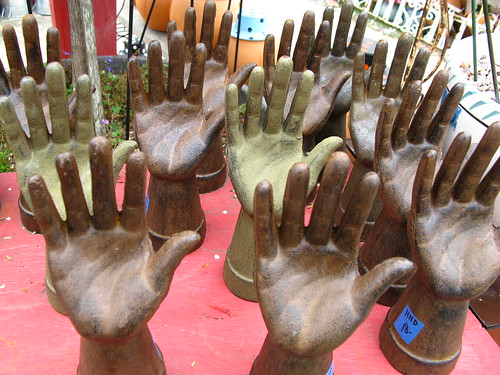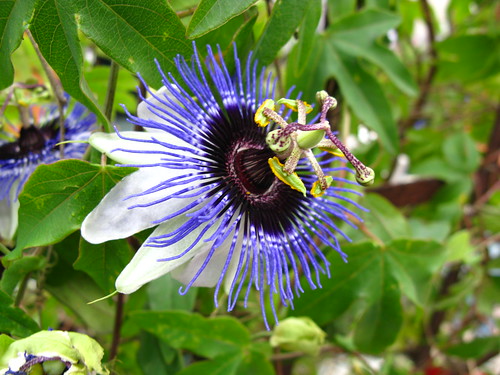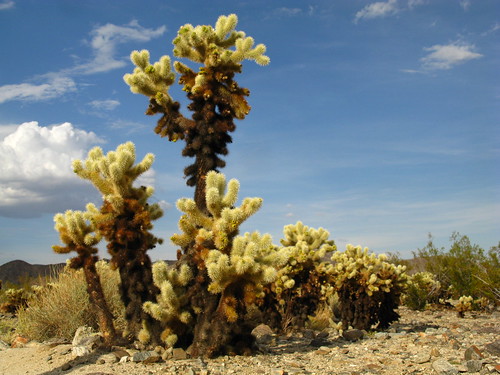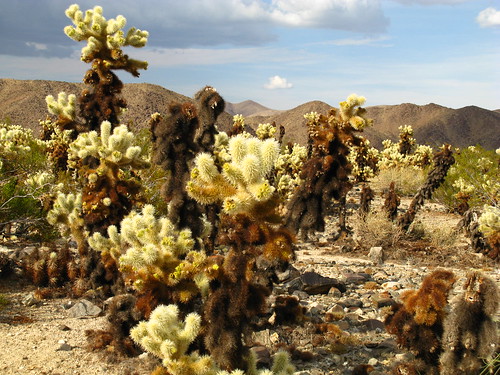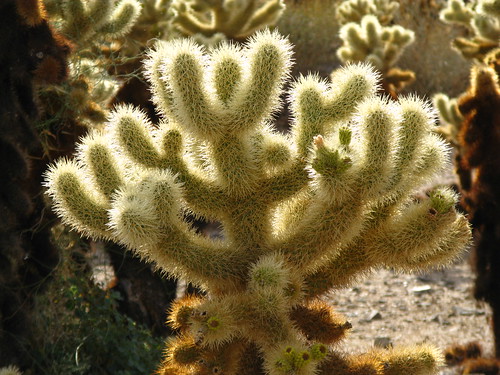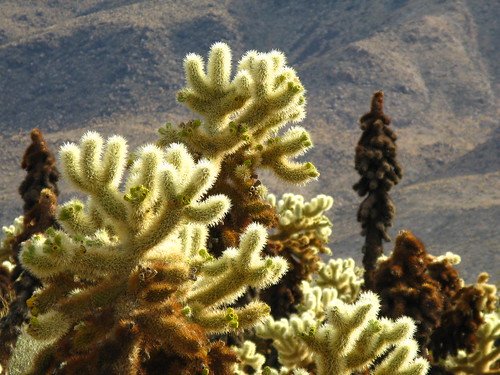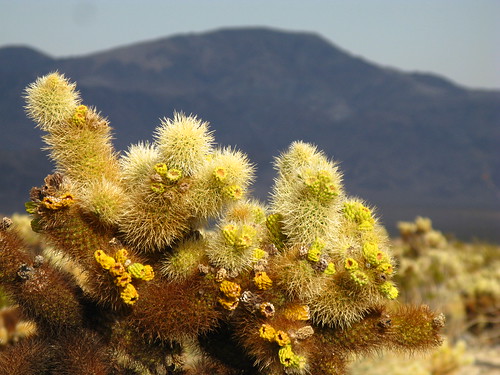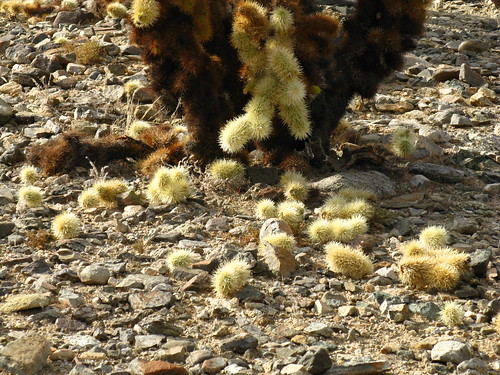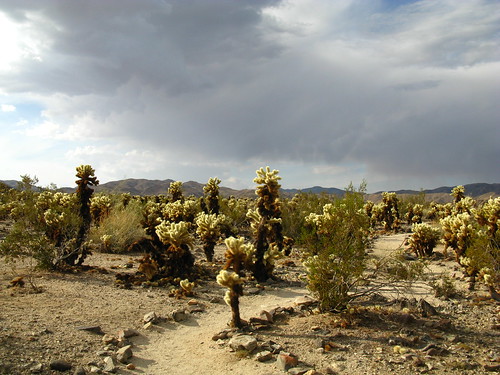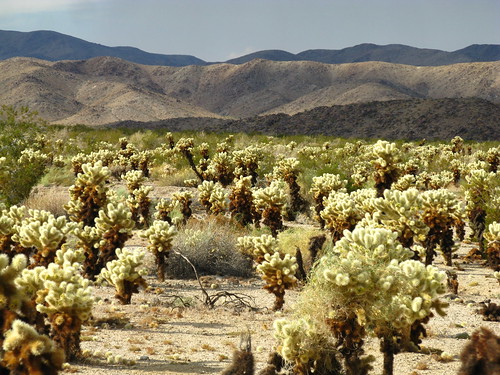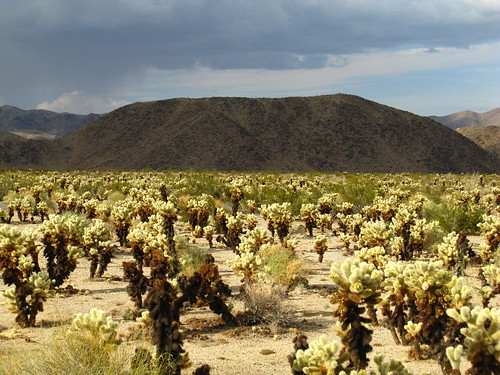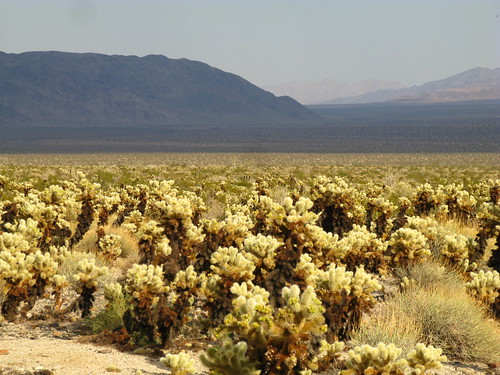In the meantime, here is my one leaf of fall color. Thank you, Vitis californica 'Roger's Red'. The whole vine should color up soon enough.
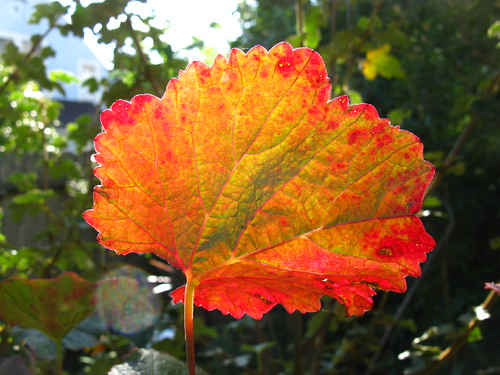
From now until around April the garden gets very, very green.
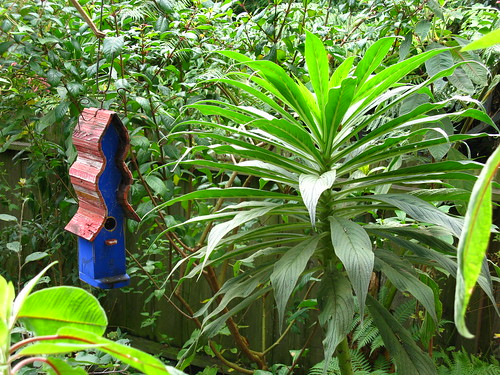
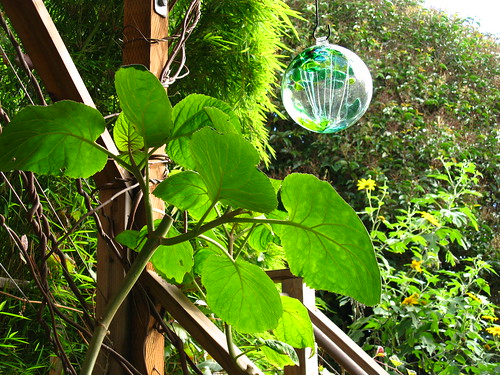
Large-leafed, giant aster Bartlettina sordida in the foreground in the pictures above and below.
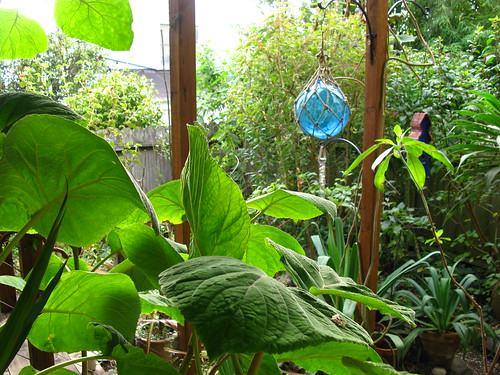
The strappy beschorneria seems to get bigger every time I look at it.
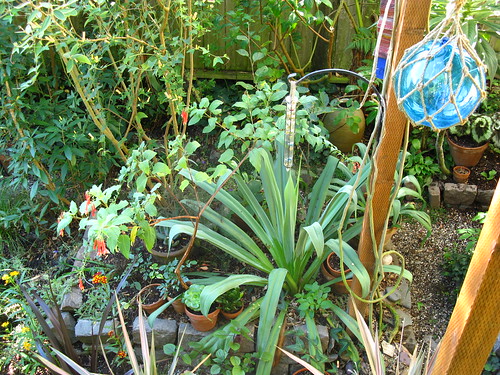
Fuchsia fulgens is a flower-making machine in my garden.
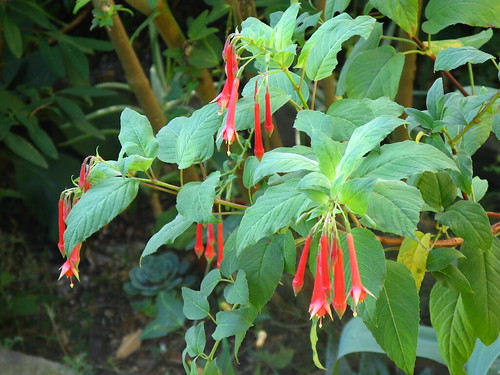
So is the aster whose name I can never remember. (Thank you cloverann for ID'ing it for me twice now!)
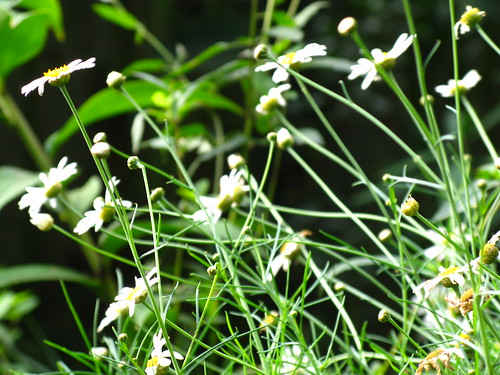
The pot of dead Muhlenbergia rigens behind the manzanita spoils this shot.
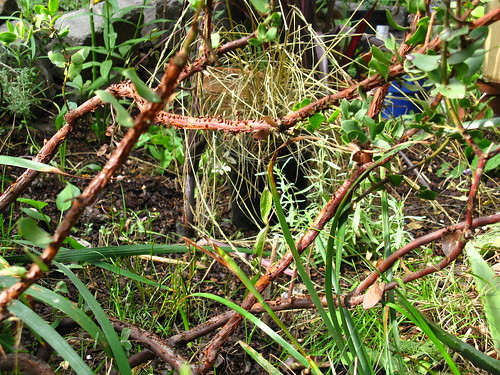
Train your eyes on the leaves instead.
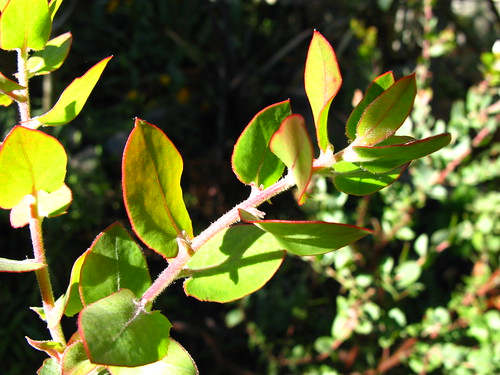
This is Arctostaphylos pajaroensis 'Lester Rowntree'. Definitely not the best A. pajaroensis you could have. I think the interesting colors in this species are more pronounced in other cultivars. I got this one as a freebie from my time at the SF Botanical Garden.
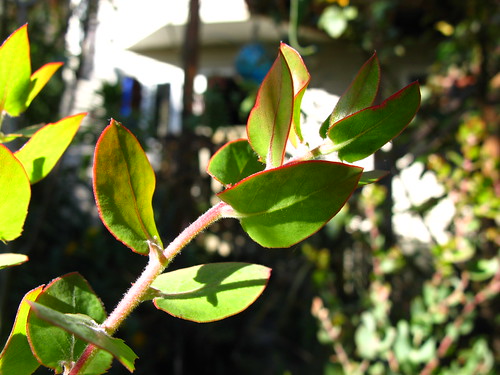
Asclepias curassavica went to seed.
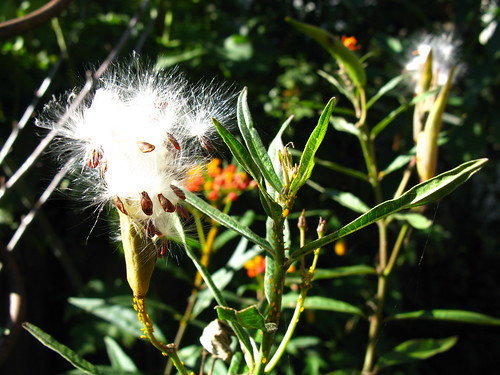
Calling all ladybugs! All you can eat buffet on aisle 5!
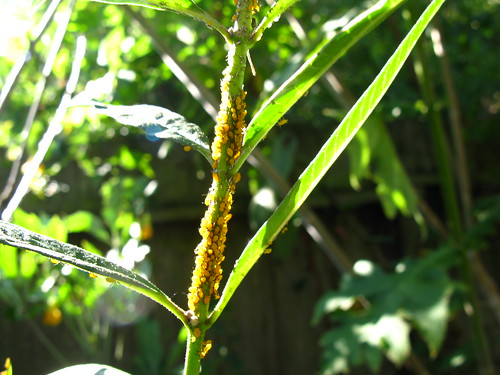
Some of the other nerines are finally budding out.
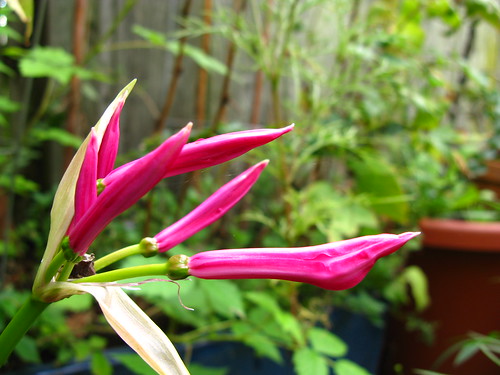
For awhile now, it's just been this one.
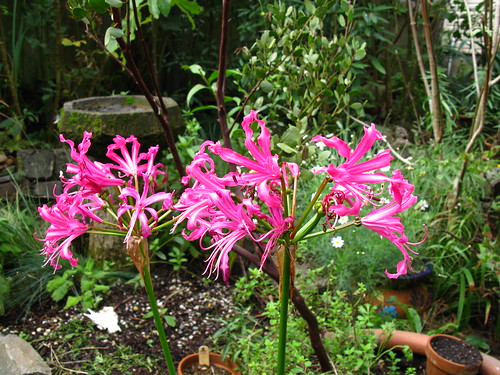
'Caroline' did not give me a heavy fall harvest.
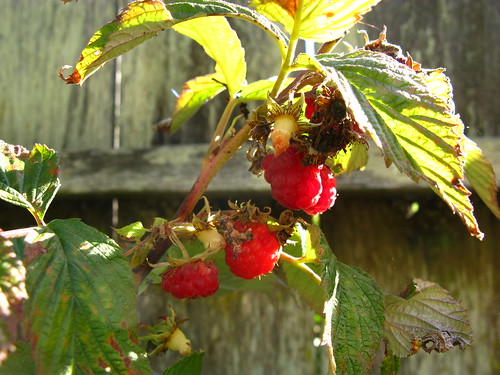
Oh, and my Gravenstein dropped both of its apples before they were quite ripe. Have I mentioned that? I ate them anyway and they were not bad. The second one which dropped a few weeks after the first one tasted a lot better.
That's pretty much it down in the garden. The mishmash of containers on the roof is, well, it's a mishmash.
